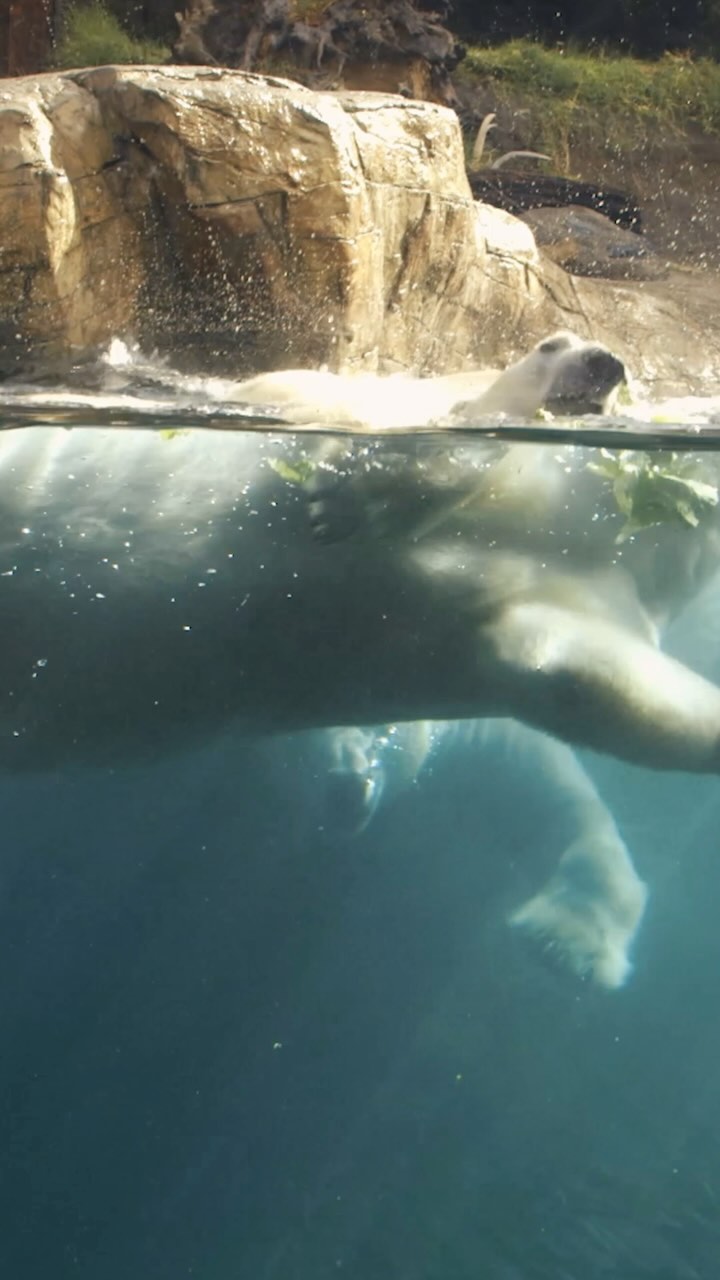– Adaptation and enrichment strategies for polar bears in warm climates
– Nutritional requirements and diet composition for polar bears in captivity
– Specific considerations for polar bear welfare and mental health in a zoo environment
– The role of zoos in polar bear conservation and public education
– Innovative practices in zoo habitat design for boreal species
Polar bears are often closely associated with icy habitats and chilly climates. Still, at the San Diego Zoo, a trio of these magnificent creatures has captured the hearts of visitors, showcasing how adaptable polar bears can be. The zoo’s polar trio are prime examples of how zoos can foster environments conducive to the health and happiness of animals far from their native ranges. The San Diego Zoo creates a “moment of zen” for the bears and their admirers by focusing on their dietary needs, environmental enrichment, and overall care.
In naturally cold habitats, polar bears consume a high-calorie diet rich in fat from marine mammals, which helps to insulate them against freezing temperatures. However, the warm climate of San Diego requires a different approach to maintain the bears’ health without excessive weight gain that could result in overheating. Consequently, the diet for the San Diego polar bear trio focuses on nourishment that mimics natural feeding patterns while accounting for the thermal stress of a sunnier locale.
Their amended diet includes beef, which offers protein similar to the seals they would hunt in the wild, and smelt, a smaller fish that still forms a part of their natural diet and provides essential fatty acids without excess calories. Additionally, fruits and vegetables are included to stimulate the bears’ metabolism and aid digestion. This dietary balance helps regulate their body temperature by minimizing the development of insulating blubber. Emphasizing foods with lower caloric density allows polar bears to engage in more physical activity without becoming lethargic – a critical component of physical health for a species that naturally roams vast distances.
Beyond diet, enrichment is key to keeping the bears mentally stimulated and content in their habitat. Enrichment activities can include puzzle feeders, scents, toys, and structures encouraging natural behaviors like digging, swimming, and foraging. These activities minimize stress and boredom, often leading to tranquility and mental well-being. Zoos frequently innovate with enrichment, introducing novel stimuli to ensure the animals’ environments remain engaging and dynamic.
They consider polar bears’ welfare and mental health in a zoo setting, which particularly hinges on understanding their natural behaviors and the stimuli they would encounter in the wild. Zoos employ animal behaviorists and keepers who observe and interact with the bears to strike an appropriate balance between their physical health and mental engagement. This commitment to replicating a naturalistic environment as much as possible is central to modern zookeeping.
Zoos also play a crucial role in preserving wild animals and raising public awareness about their plights. With polar bear populations threatened by climate change, which causes habitat loss, captive breeding programs and zoos’ educational outreach efforts serve as a lifeline for the species. These initiatives raise awareness about the consequences of environmental degradation and encourage conservation action at individual and policy levels.
To accommodate these large, intelligent animals in a relatively warm climate, zoos have had to reimagine their habitat designs. Polar bear enclosures at zoos like San Diego’s incorporate land and water elements, with chilled pools designed to offer relief from the heat and ample space to roam. The habitat is crafted to simulate the tundra, with technology enabling keepers to modify environmental conditions to meet seasonal needs.
Through carefully balancing diet, enrichment, habitat design, and educational outreach, the San Diego Zoo exemplifies how careful management and science-based practices can allow even the most boreal species a tranquil existence under the sunny skies of Southern California. Observing the polar bear trio in their carefully constructed environment offers insights into how zoos contribute to the well-being and preservation of these majestic animals.
This polar trio has become an educational asset, inspiring visitors to learn more about polar bears and the challenges they face in the wild. Through this engagement, the public can appreciate the species’ beauty and understand the necessity of maintaining biodiversity. This combination of care, creativity, and commitment to conservation allows these polar bears to find a moment of zen despite being far removed from their native Arctic expanses.
*****
Source Description
Paws for a moment of zen with our polar trio 🐻❄️
In sunny San Diego, our trio of bears enjoy a diet designed to keep them cool. Their menu includes beef, smelt (a fishy favorite), and a hearty helping of fruits and veggies. 🥕 By feeding them foods with fewer calories, we help reduce their body’s insulation (blubber), allowing them to stay naturally cooler.
class=”instagram-media” data-instgrm-permalink=”https://www.instagram.com/reel/C5GtyBuLL6O/” data-instgrm-version=”14″ style=” background: border:0; border-radius:3px; box-shadow:0 0 1px 0 rgba(0,0,0,0.5),0 1px 10px 0 rgba(0,0,0,0.15); margin: 1px; max-width:540px; min-width:326px; padding:0; width:99.375%; width:-webkit-calc(100% – 2px); width:calc(100% – 2px);”>


